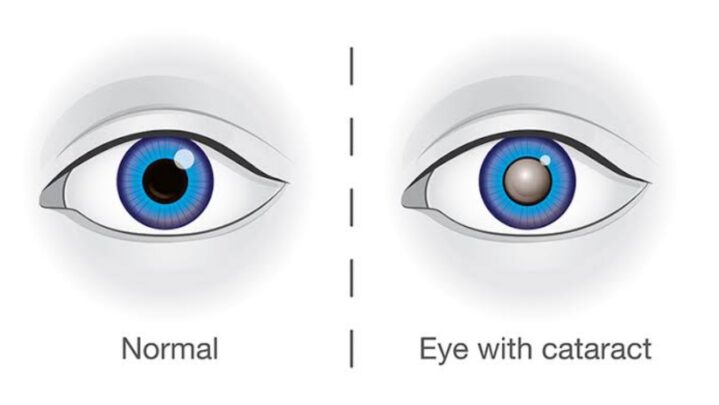A cataract is a clouding of the eye’s normally clear lens. Cataract patients compare seeing through clouded lenses to gazing through a frosty or fogged-up window. Cataracts can cause clouded vision, making it difficult to read, drive a car (especially at night), or see the expression on a friend’s face. Most cataracts form slowly and do not interfere with your vision at first. Cataracts, on the other hand, will eventually impair your vision. Stronger lighting and eyeglasses can help you deal with cataracts at first. However, if your vision is interfering with your daily activities, you may require cataract surgery. Cataract surgery, fortunately, is often a safe and effective treatment.
Types of cataracts
Cataracts that impact the centre of the lens
At first, a nuclear cataract may cause increased nearsightedness or perhaps a brief improvement in your reading vision. However, as time passes, the lens becomes more thickly yellow, severely obscuring your eyesight. The lens may even turn brown as the cataract advances. Advanced yellowing or browning of the lens might make it difficult to discriminate between color tones.
Cataracts that impair the lens’s edges
Cortical cataracts begin as whitish, wedge-shaped opacities or streaks on the lens cortex’s outer edge. The streaks gradually expand to the centre of the lens and interfere with light traveling through it.
Cataracts affecting the back of the lens
A posterior subcapsular cataract begins as a small, opaque region near the back of the lens, directly in the path of light. A posterior subcapsular cataract frequently impairs reading vision, lowers vision in strong light, and generates glare or halos around lights at night. These types of cataracts progress more quickly than others.
Cataracts are inherited.
Some people are born with cataracts, while others develop them as children. These cataracts could be hereditary or caused by an intrauterine illness or trauma.
Certain disorders, such as myotonic dystrophy, galactosemia, neurofibromatosis type 2, or rubella, may also cause cataracts.
Credits: Mayo Clinic
Also Read: What Is Worry Time? Know-How To Schedule Worry Time Effectively: Part 2





